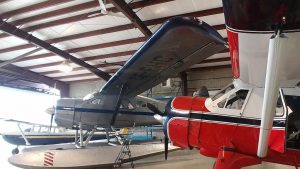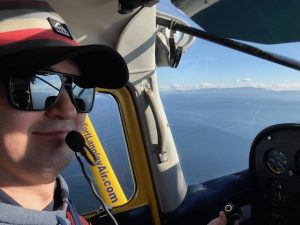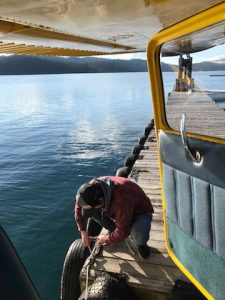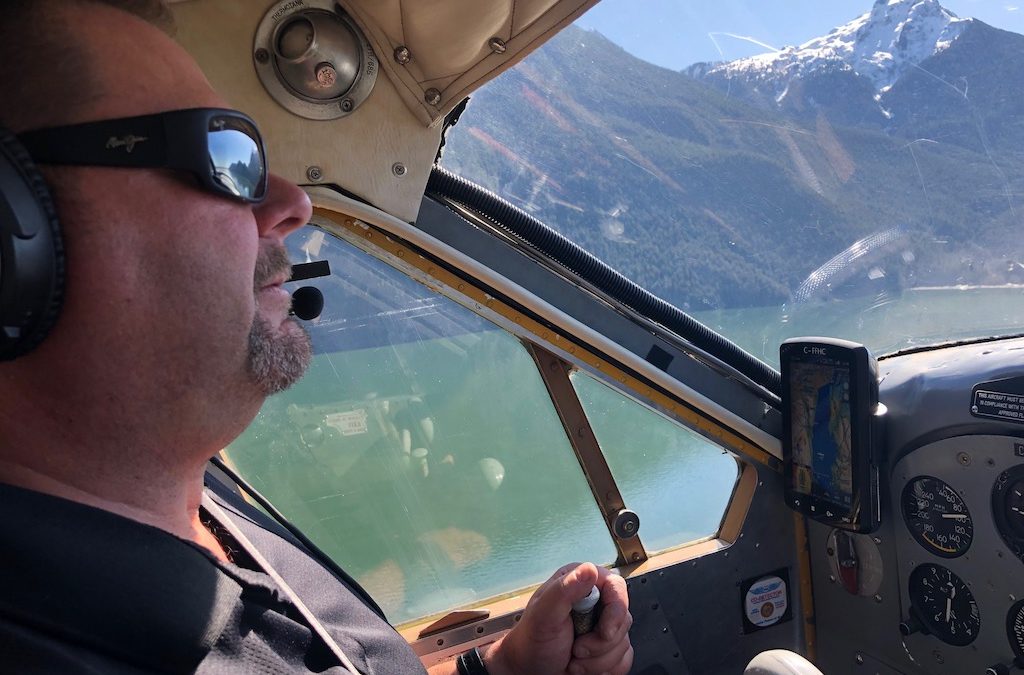A day of floatplane training at Fort Langley Air takes place in a clean, modern environment with professional pilots in well-maintained planes. Our float plane ratings are taught by seasoned professionals who have worked in the aviation industry. We stay very connected to float operators in Canada, and their working pilots and we are confident that we know what the industry is looking for. We are always up to date with Transport Canada regulations and exceed all maintenance and safety standards. Pricing information for all of our float training programs is on our Float Training page.
Getting Started
Call our office to discuss your Seaplane Rating or the Career Bush Pilot Program. We look forward to sharing our knowledge with you! +1 (604) 513.9886
 Our locations and fleet
Our locations and fleet
You will train at one of our two Fraser River locations: The Fort Langley Airport or the Pitt Meadows Airport. Both hangars are comfortable, modern environments with washroom facilities, boardrooms for ground school training. There is ample free parking at both locations. Our fleet is kept in top shape. We look forward to sharing our knowledge with you. For more information, check out our Fleet page and our Contact page.
 Our Seaplane Rating
Our Seaplane Rating
The seaplane rating can usually be completed 4-5 days and 4-5 flights, depending on weather and experience. We’ll be able to give you a better idea once we do the Intro Flight.
Because of the higher risk environments involved with flying float planes, it is imperative that pilots possess rock solid basic skills. Different flight schools have different standards and float planes are just not good for teaching the basics, so we will need to assess your skills. Pricing and hours required appear here.
Seaplane Rating: Introduction Flight
If you’re interested in the Seaplane Rating, the first step is to do an Introduction Flight. It’s exactly like a Fam Flight at flight schools and consists of completing a few circuits over the river at Fort Langley or Pitt Meadows. This time counts towards your Seaplane Rating.
From time to time we do encounter pilots that require some basic skill refinement before starting float training. In these cases, we suggest you do a few hours on a taildragger – e.g. Citabria, Scout or C-170. Taildraggers are a great transition into float flying because of the need for solid footwork and constant inputs. Flying taildraggers will improve your overall flying skill. After a little taildragger training, we find that pilots make an easy transition into float training.
Seaplane Rating: Ground School
For the vast majority of our clients, after a successful introduction flight, we do a 2-hour ground school course, followed by your first proper training flight. We charge one fee for all ground training for the rating. It includes Pierre Rivest’s classic “Bush Flying” as well as access to our online library through our website.This is different than some programs which charge for ground school and ground briefings before and after each flight.
Ground School Topics:
- design of the floats
- hazards of float flying
- reading the water
- right-of-way on the water
- taxi
- take-off
- landings
- circuits
Once you start flight training for the Seaplane Rating, you will cover:
- normal circuits
- glassy water circuits
- short field circuits
- docking, sailing, beaching
- emergencies and upper air work
Transport Canada Requirements
Transport Canada requires 5 solo take-offs and landings as part of the Seaplane Rating. Once you can complete 3 normal circuits in a row, without a word from the instructor, you’re ready to go solo. You’ll drop the instructor off at the dock then complete your solo circuits.
We can usually complete the Rating in 4-5 days and 4-5 flights, depending on weather and experience. We’ll be able to give you a better idea once we do the Intro Flight.
Career Training: Career Bush Pilot Program and Getting Hired
If your plan is to fly floats commercially, more training will be required. The Seaplane Rating trains you for normal circuits, however, commercial float operations will require you to be comfortable in all conditions. Our goal and mandate is to equip commercial pilots to be comfortable and ready to operate on the West Coast and across the country. Upon completion of your Career Bush Pilot Program, you will be ready to go to work. We also have a Back to the Bush refresher course in case you are getting back onto floats after some time on wheels.
Getting Hired: Pilots generally require 25-50 hours to be hired to fly floats, depending on the employer and the operational environment. A seasonal float operation in Northern Canada or Ontario will have different requirements than a year-round operation on the BC West Coast. Our program is well-known to float operators across Canada. Have a look at our Wall of Fame to connect with career pilots who have done their ratings with Fort Langley Air.
Our Career Bush Pilot: Three Steps
1) Seaplane Rating
2) Intermediate
3) Advanced
Our bush training focuses on all facets of bush flying:
- Flying into high altitude mountain lakes
- Take off and landing techniques on short lakes
- Mountain flying
- Ocean/salt water float work
- Commercial harbours and docks
- Rivers and currents
- Freight loading/weight and balance
- Passengers associated with float flying
- Egress
Getting Started
Call our office to discuss your Seaplane Rating or the Career Bush Pilot Program. We look forward to sharing our knowledge with you! +1 (604) 513.9886


Recent Comments